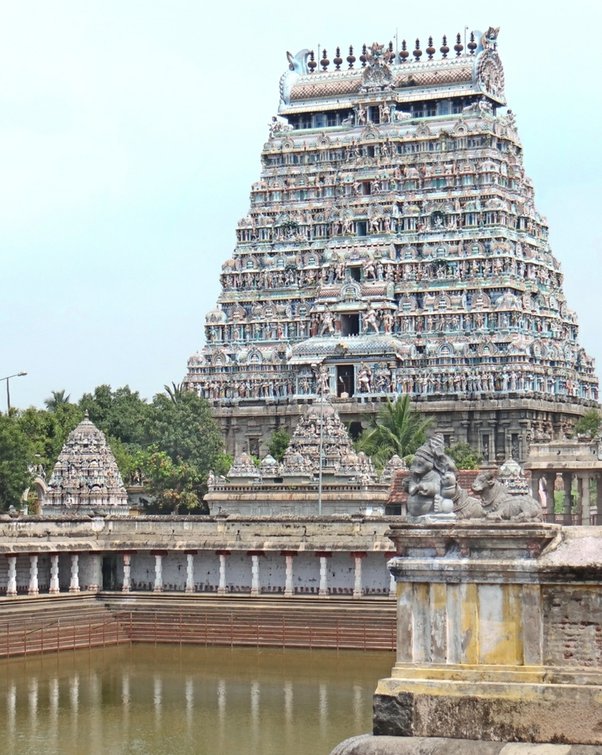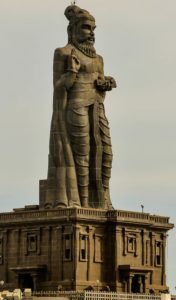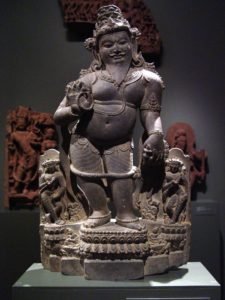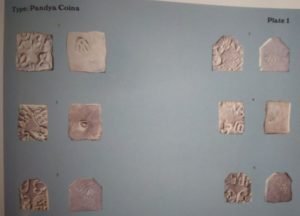Was Tamil culture “non-Hindu (non-Aryan)?”


Well obviously, No.
There is a wealth of sources detailing the history, socio-political environment and cultural practices of ancient Tamilakam (தமிழகம்), including volumes of literature and epigraphy. Any body with any curiosity can read it, and will only find mention of Hinduism/Jainism everywhere.
Noted poets from Avai, Thrivalluvar, Sambandar, Sudarar, Nakeerar, Kambar to Thirumazhisai Alvar all who immensely contributed to Tamil were Saints who followed Hinduism.
The Book of Aṟam is the most important of all the books of the Tirukkural and exclusively deals with dharma, which is common to the entire work of the Tirukkural, thus providing the essence of the work as a whole.
It deals with the essentials of the Yoga philosophy by expounding the household life that ultimately leads to the path to renunciation. Most of Tirukkural, deals with Dharma, Ahimsa(Non Violence), vegetarianism and renunciation. All of these are Hindu philosophy.

There are attempts from modern historians to paint Tamizh Culture as a “Different” and a “Separate” civilization to the “Oppressive” and “Benchpressing” Aryans of North India with their Caste system and other bigoted practices.
Even though pretty much everyone knows about the Hindu-Aryan culture of Tamizh Nadu but there are a lot of claims which say the earliest period of the Sangam age did not have any outside Aryan influence.
This claim is False.

First of all, there is much evidence of Vedic And Shastric elements present in the Early Sangam period. There was no record of any Advanced Civilization before that,
One of the very first poems in Puram (Sangam literature is chiefly classified into Akam and Puram) is an invocation of Lord Śiva by the great poet Perunthevanar, the author Bharatamhttps://www.jstor.org/stable/44138837%20(Pg-4)
The poem praises the Konrai flower in God’s ears and breasts, the white bull which forms as his vehicle as well as insignia, the blue patch on his neck celebrated by Antanar-s (Brahmins, Iyer Brahmins) who recites the Marai (Vedas) , the half-male half-female body which is explicit or concealed, the eight Kanam (Gana) of his followers, the life-giving karaku or holy vessel and the catai ( Jata) a ) or matted hair of this great Tavatter (Tapasa) or patron saint of penance
Page-3
Let us ignore the stupid arguments on Lord Śiva being a separate “Dravidian god”, the qualification that the blue patch of poison on his neck is praised by the “Vedic Brahmin” is the clear proof of “Vedic influence”. The fact that the Poet mentions the Puranic Legend of the churning of the milky ocean also proves the Society’s familiarity with Vedas and Purana-s.
Another example is how the great poet Muranciyūr Mutinākarāyar exalts the Chera king Uthiyan Cheralathan by affirming his own faith in Veda-s and revealing its popularity in South Indiahttps://www.jstor.org/stable/44138837%20(PG-5)
He quotes,
“Even if milk turns into sour taste, and the day looses its lustre, and the four Vedas – the word Veda itself is employed here- fail to propagate the truth, you will reign gloriously forever surrounded by ministers who are united in council and wise.”
According to Aryan beliefs, whenever a warrior dies in battle, regardless of his past deed he will attain heaven, this same example has been seen in Ancient Tamilakam, https://www.jstor.org/stable/44138837%20(pg-6)
And the final nail in the coffin is that Sangama as a word isn’t Tamizh, its old Sanskrit. According to Tamizh grammar rules, proper nouns can’t begin with Sa, Ra, and Va.
There are also archeological claims to support the fact that the Sangam period had a significant Vedic element.
The Vedic Janapada had grand cities near the Gangetic region as well as in Deccan. These Janapada-s minted their own punch-marked coins. In fact, we withal find early Tamil Pandyan kingdom minting the same type of coins with their royal fish symbol on the reversehttps://sangam%20age%20tamil%20coins%20by%20r.krishnamurthy/

This only designates that congruous kingdoms & currency systems were established in southern India during the time of Vedic Janapadas with the influences from the north.
The fact that many people are trying to make such erroneous claims prove what their agenda is!
DISCLAIMER: The author is solely responsible for the views expressed in this article. The author carries the responsibility for citing and/or licensing of images utilized within the text.
